The Misconception: Willpower is just a metaphor.
The Truth: Willpower is a finite resource.

Forever Alone by Lysgaard
(Source: Lysgaard)
In 2005, a team of psychologists made a group of college students feel like scum.
The researchers invited the undergraduates into their lab and asked the students to just hang out for a while and get to know each other. The setting was designed to simulate a casual meet-and-greet atmosphere, you know, like a reception or an office Christmas party – the sort of thing that never really feels all that casual?
The students divided into same-sex clusters of about six people each and chatted for 20 minutes using conversation starters provided by the researchers. They asked things like “Where are you from?” and “What is your major?” and “If you could travel anywhere in the world, where would you go?” Researchers asked the students beforehand to make an effort to learn each other’s names during the hang-out period, which was important, because the next task was to move into a room, sit alone, and write down the names of two people from the fake party with whom the subjects would most like to be partnered for the next part of the study. The researchers noted the responses and asked the students to wait to be called. Unbeknownst to the subjects, their choices were tossed aside while they waited.
The researchers – Roy F. Baumeister, C. Nathan DeWall, Natalie J. Ciarocco and Jean M. Twenge of Florida State, Florida Atlantic, and San Diego State universities – then asked the young men and women to proceed to the next stage of the activity in which the subjects would learn, based on their social skills at the party, what sort of impression they had made on their new acquaintances. This is where it got funky.
The scientists individually told the members of one group of randomly selected people, “everyone chose you as someone they’d like to work with.” To keep each person in the wanted group isolated, the researchers also told each person the groups were already too big and he or she would have to work alone. Students in the wanted group proceeded to the next task with a spring in their step, their hearts filled with moonbeams and fireworks. The scientists individually told each member of another group of randomly selected people, “I hate to tell you this, but no one chose you as someone they wanted to work with.” Believing absolutely no one wanted to hang out with them, people in this group then learned they would have to work by themselves. Punched in the soul, their self-esteem dripping with inky sludge, the people in the unwanted group proceeded to the main task.
The task, the whole point of going through all of this as far as the students knew, was to sit in front of a bowl containing 35 mini chocolate-chip cookies and judge those cookies on taste, smell, and texture. The subjects learned they could eat as many as they wanted while filling out a form commonly used in corporate taste tests. The researchers left them alone with the cookies for 10 minutes.
This was the actual experiment – measuring cookie consumption based on social acceptance. How many cookies would the wanted people eat, and how would their behavior differ from the unwanted? Well, if you’ve had much contact with human beings, and especially if you’ve ever felt the icy embrace of being left-out of the party or getting picked last in kickball, your hypothesis is probably the same as the one put forth by the psychologists. They predicted the rejects would gorge themselves, and so they did. On average the rejects ate twice as many cookies as the popular people. To an outside observer, nothing was different – same setting, same work, similar students sitting alone in front of scrumptious cookies. In their heads though, they were on different planets. For those on the sunny planet with the double-rainbow sky, the cookies were easy to resist. Those on the rocky, lifeless world where the forgotten go to fade away found it more difficult to stay their hands when their desire to reach into the bowl surfaced.
Why did the rejected group feel motivated to keep mushing cookies into their sad faces? Why is it, as explained by the scientists in this study, that social exclusion impairs self-regulation? The answer has to do with something psychologists now call ego depletion, and you would be surprised to learn how many things can cause it, how often you feel it, and how much in life depends on it. Before we get into all of that, let’s briefly discuss the ego.

Freud in 1885
(Source: Wikimedia Commons)
So, there was this guy named Sigismund Schlomo Freud. He was born in 1856, the oldest of eight children. He grew up and became a doctor. He loved cocaine and cigars. He escaped the Nazis but lost his sisters to concentration camps, and in 1939, an old man in great pain from mouth cancer, he used assisted suicide to shuffle off his mortal coil. Time Magazine once named him one of the most important thinkers of the 20th century. He is why the word “ego” is part of everyday language, and he is probably the first face you imagine when someone says “psychology.”
Despite his fame, the late 1800s wasn’t a good time to be in need of mental or physical care. Medical school was mostly about anatomy, physiology and the classics. You drew the insides of things and wondered what they did. You learned where the heart was, how to amputate a leg, and what Plato had to say about his cave. Pretty much everything useful that doctors know today was yet to be discovered or understood. Sore throat? No problem. Tie some peppered bacon around your neck. Hernia? Lie down so you can anally absorb a little tobacco smoke. The wild west of science and medicine was only just becoming tamed, so in many places there was still debate over things like washing your hands after dealing with a fetid corpse before sticking them still sticky into the body of a woman giving birth.
Near the end of his studies, Freud set himself to the squishy, messy task of slicing apart eels. He dissected 400 of them looking for testicles, a feature of the animal still unknown to science at the time. It was thoroughly disgusting and unfulfilling work, and it went nowhere. If he had found testes, his name might appear in different textbooks today. Instead, he earned his medical degree and went to work in a hospital where he spent years studying the brain, drawing neurons, and searching in that gelatinous goop much as he had the innards of the eels. But, as it does for so many of us, money became a central concern, and to pay the bills he abandoned the laboratory to set up his own medical practice. He remained the same intense, obsessive Freud though, and as he searched for the source of nervous disorders by going farther and farther back into the childhoods and histories of his patients he began to sketch out the geography and anatomy of the mind. This is how he came to produce his model of the psyche. Freud imagined behavior and thought, neurosis and malady, were all the result of an interplay and communication between mental agencies each with their own functions. He called those agencies “das Es,” “das Ich,” and “das Über-Ich” or “the it,” “the I,” and the “over-I,” – what would famously become known to English speakers as the id, the ego and the superego. In Freud’s view, the id was the primal part of the mind residing in the unconscious, always seeking pleasure while avoiding uncomfortable situations. The ego was the realistic part of the mind that considered the consequences of punching people in the face or stealing their french fries. When the ego lost a battle with the id over control of the mind, the super-ego would tower over the whole system and shake its metaphorical head in disgust. This, Freud thought, forced the ego to take control or hide behind denial or rationalization or any one of many defense mechanisms so as to avoid the harsh judgment of the super-ego from which morals and cultural norms exerted their influence. Of course, none of this is actually true. It was just the speculation of a well-educated man at about the same time penicillin was discovered.

Freud’s Model of the Psyche
(Source: UNH)
Doctors like Freud could hypothesize whatever they wished, and if they were charismatic enough in person and on paper, they would lead the conversation in science. Once, Freud treated a female patient who complained of menstrual cramps. He sent her to an ear, nose, and throat doctor he knew who had this hypothesis that runny noses and menstruation were connected. During recovery, after her nasal cavity had received a proper chiseling, she complained of a growing pain in her sinuses that not even morphine could abate, and one night she produced two bowls of pus before horking out a piece of bone the size of a water chestnut. Freud concluded the hemorrhage was the result of a hysterical episode fueled by repressed sexual longings. A return trip to the surgeon determined it was actually a leftover piece of gauze. Freud remained unconvinced, claiming her relief came from psychoanalysis.
The point here is that science has come a long way since then, and although Freud’s work is still a big part of pop culture and everyday language – Freudian slips, repression, anal retentiveness, etc. – it’s mostly bunk, and you know this because psychology became a proper science over the last century with rigorous lab work published in peer reviewed journals. Today, scientists are still slicing away at the problem of consciousness and the ego, or what we now call the self, and that brings us back to Roy F. Baumeister and his bowl of cookies.
In the 1990s, Baumeister and his colleagues spent a lot of time researching self-regulation through the careful application of chocolate. Self-regulation is an important part of being a person. You are the central character in the story of your life, the unreliable narrator in the epic tale of your past, present, and future. You have a sense there is boundary between you and all the other atoms pulsating nearby, a sense of being a separate entity and not just a bag of organs and cells and molecules scooped out of the sea 530 million years ago. That sense of self cascades into a variety of other notions about your body and your mind called volition – the feeling of free will that provides you with the belief that you are in control of your decisions and choices. Volition makes you feel responsible for your actions both before and after they occur. There are a few thousand years of debate over what this actually means and whether or not it is an illusion through and through, but Baumeister’s research over the last decade or so has been about learning how that sense of self-control can be manipulated.
In 1998, Baumeister and his colleagues Ellen Bratlavsky, Mark Muraven, and Dianne M. Tice at Case Western Reserve University gathered subjects for a study. They told the participants the research was on taste perception, and thus each person was to skip a meal before the experiment and arrive with an empty stomach. The scientists led the subjects one at a time into a room with an oven that had just finished baking chocolate-chip cookies and had each person sit down in front of a selection of two foods – chocolate-chip cookies stacked high and a lone bowl of radishes. They asked a third of the participants to eat only the radishes and to take note of the sensations for follow up questions the next day. Another third were to eat only the cookies. A final third skipped all of this. The psychologists then left the room for five minutes and returned with a questionnaire about mood. According to Baumeister’s book on his research, Willpower, written with the help of John Tierney, the typical radish eater stared the cookies down like a gunfighter on main street. Some even went so far as to grab the cookies and put them to their noses. If they couldn’t have the taste, they could at least take a long, deep drag on the aroma. Still, the radish group stuck to the rules; not one of them ate a cookie, but not without some anguish. Next, the subjects moved on to a second experiment along with the group that skipped the food completely. The next task was to sit and solve puzzles. All each subject had to do was trace a geometric figure without lifting his or her pencil or retracing any lines. They were told they could take as long as they wanted, but they weren’t told that the puzzles were impossible to solve. For the next 30 minutes, the scientists watched and recorded the behavior of the participants, eager to see how long it would take each one to give up.

Source: Wikimedia Commons
On average, the people left out of the room with the radishes and the cookies worked for about 20 minutes before admitting defeat. The people allowed cookies persevered for about 19 minutes. The people who got stuck with the radishes, and had to fight off their impulse to gobble up a delicious confection in a room saturated with chocolate fumes, quit after approximately 8 minutes. Baumeister said of this, “Resisting temptation seems to have produced a psychic cost.” Somehow, the evidence suggested the more you restrain that which Freud would have called your id, the more difficult it becomes to restrain it. Freud would have probably have said the more your ego fought the id, the more it held it down, the more tired, exhausted, and weak your ego became. Baumeister named this process ego depletion with a nod and wink.
Baumeister and his colleagues soon discovered many other ways to get people to give up early. In one study, college students divided into three groups. One group had to give a speech supporting raising tuition at their college. A second group chose between a speech for or against tuition hikes. A third group proceeded directly to the second stage – those devious, unsolvable puzzles. This time, the no-speech group and the group that gave the speech with which they likely disagreed both lasted about twice as long as the people who got to choose what they spoke about. The results suggested it wasn’t just restraint in the face of desire that could deplete your ego, but any choice at all. The subjects who didn’t have to choose a topic were able to allow their volition to take a break, and their ego energy reserves remained intact. Another study had participants attempt to show and feel no emotion while watching video of either stand-up comedy or an actor pretending to die from cancer. They then tried to solve word puzzles along with people who watched the same videos with the freedom to feel whatever they wished. This time, the people who exerted emotional restraint subsequently solved fewer puzzles than those who let their feelings flow.
In a study about active and passive choices, subjects had to find all instances of the letter e on a piece of paper filled with nonsense text. Another group had to find every e that was at least two letters distant from a vowel. Try it yourself in this paragraph and you’ll notice the first group’s task was way easier and required little effort. The e finders who had to adhere to the vowel rule took much longer as they had to examine every word and double-check themselves. Next, people in each group individually watched a video of a blank wall while holding a remote control. For some people pressing a button would end the video. For others pressing down kept the video running. The subjects then had to watch the boring video until they believed they had seen enough to answer a questionnaire about it. Nothing ever happened in the video, but something might have happened at any moment as far as the subjects knew. Each person was also told as soon as he or she ended the video they would get to watch a clip from Saturday Night Live. The people who first performed the easy task and then had to press a button to end the boring video did so much sooner than the depleted group. They also held the button down longer when letting it go meant ending the clip. The depleted group just went with whatever was the most passive option in either case. If it was to press a button, they procrastinated. If it was to hold a button down, they gave up sooner. The results suggested that focused concentration later made people less eager to make active choices.
A great deal of your thoughts and behaviors are automatic and unconscious. Blinking and breathing, for example, need no help from the conscious part of you. Much of your behavior, like driving to work or toweling off after a shower, just happens while your conscious mind drifts off to think about Game of Thrones or how you’ll approach your boss for a raise. If you touch a stove you recoil without thought. Your desire to avoid dark alleys and approach embraces occurs without your input. When moved by a song or a painting or a kitten, the emotional rush comes without volition. Much of your mental life is simply not under your conscious control, and Baumeister’s research suggests once you take the helm every act of volition diminishes the next.

Source: Wikimedia Commons
It is as if the mind were a terribly designed experimental spaceship. As long as the ship travels in a straight line it burns very little fuel, but as soon as the pilot takes over in any way, to dive or bank or climb, this imaginary ship burns fuel at an alarming rate, leaving behind less fuel with which to steer in the future. At some point you must return the craft to autopilot until it can be refueled, or else it crashes. In this analogy, taking control of the human mind includes making choices, avoiding temptation, suppressing emotions and thoughts, and acting in a way deemed appropriate by your culture. Saying no to every naughty impulse, from raiding the refrigerator to skipping class, requires a little bit of willpower fuel, and once you spend that fuel it becomes harder to say no the next time. All Baumeister’s research suggests that self-control is a strenuous act. As your ego depletes, your automatic processes get louder, and each successive attempt to take control of your impulses is less successful than the last. Yet ego depletion is not just the effects of fatigue. Being sleepy, drunk, or in the middle of a meth binge will certainly diminish your ability to resist pie, but what makes ego depletion so weird is that the research suggests the system can also get worn out just from regular use. Inhibiting and redirecting your own behavior in any way makes it more difficult to delay gratification and persevere in the face of adversity or boredom in the future.
So, why is it then that the students hit by the rejection bus, the ones told that no one picked them after listening to them prattle at the fake party, couldn’t keep the cookies out of their mouths? It seems as though ego depletion can go both ways. Getting along with others requires effort, and thus much of what we call prosocial behavior involves the sort of things that deplete the ego. The results of the social exclusion study suggest that when you’ve been rejected by society it’s as if somewhere deep inside you ask, “Why keep regulating my behavior if no one cares what I do?”
You may have felt the urge to shut down your computer, shed your clothes, and walk naked into the woods, but you don’t do it. With differing motivations, many people have famously exited society to be alone: Ted Kaczynski, Henry David Thoreau, Christopher McCandless to name a few. As with these three, most don’t go so far as to shed all remnants of the tools and trappings of modern living. You may decide one day to throw middle fingers at the material world and head into the wild, but you’ll probably keep your shoes on and take a pocket knife at the very least. Just in case of, you know, bears. It’s a compelling idea nonetheless – leaving society with no company. You enjoy watching shows like Survivorman and Man vs. Wild. You revisit tales like Castaway and Robinson Crusoe and Life of Pi. It’s in our shared experience, a curiosity and a fear, the idea of total expulsion from the rest of your kin.
Ostracism is a potent and painful experience. The word comes from a form of serious punishment in ancient Athens and other large cities. The Greeks often expelled those who broke the trust of their society. Shards of pottery, ostracon, were used as voting tokens when a person’s fate was on the ballot. Primates like you survive and thrive because they stick together and form groups, keeping up with those prickly social variables like status and alliance, temperament and skill, political affiliation and sexual disposition to prevent ostracism. For a primate, banishment is death. Even among your cousins the chimps, banishment is rare. The only lone chimps are usually ex-alpha males defeated in power takeovers. Chimpanzees will stop hanging out, stop grooming, but they rarely banish. It is likely this has been true of your kind going back for many millennia. A person on their own usually doesn’t make it very long. Your ancestors probably survived not only by keeping away from spiders, snakes, and lions, but also by making friends and not rocking the boat too much back at the village. It makes sense then that you feel an intense, deep pain when rejected socially. You have an innate system for considering that which might get you ostracized. When you get down to it, most of what you know others will consider socially unacceptable are behaviors that would demonstrate selfishness. People who are unreliable, who don’t pitch in, or share, or consider the feelings of others get pushed to the fringe. In the big picture, stealing, raping, murdering, fraud and so on harm others while sating some selfish desire of an individual or a splinter group. Baumeister and his group wrote in the social exclusion paper that being part of society means accepting a bargain between you and others. If you will self-regulate and not be selfish then you get to stay and enjoy the rewards of having a circle of friends and society as a whole, but if you break that bargain society will break its promise and reject you. Your friend groups will stop inviting you to parties, unfollow you on Twitter. If you are too selfish in your larger social group, it might reject you by sending you to jail or worse.
The researchers in the “no one chose you” study proposed that since self-regulation is required to be prosocial, you expect some sort of reward for regulating your behavior. People in the unwanted group felt the sting of ostracism, and that reframed their self-regulation as being wasteful. It was as if they thought, “Why play by the rules if no one cares?” It poked a hole in their willpower fuel tanks, and when they sat in front of the cookies they couldn’t control their impulses as well as the others. Other studies show when you feel ostracized and unwanted, you can’t solve puzzles as well, you become less likely to cooperate, less motivated to work, more likely to drink and smoke and do other self-destructive things. Rejection obliterates self control, and thus it seems it’s one of the many avenues toward a state of ego depletion.
So, looking back on all of this, what about the nutty propositions put forth by Freud? All of this talk about mental energy, impulses, and cultural judgement sounds a lot like we are validating the ideas of the id, ego, and superego, right? Well, that’s why psychologists have been working so hard to pinpoint what is being depleted when we speak of ego depletion, and it may just be glucose.
A study published in 2010 conducted by Jonathan Leval, Shai Danziger, and Liora Avniam-Pesso of of Columbia and Ben-Guron Universities looked at 1,112 judicial ruling over the course of 10 months concerning prisoner paroles. They found that right after breakfast and lunch, your chances of getting paroled were at their highest. On average, the judges granted parole to around 60 percent of prisoners right after the judge had eaten a meal. The rate of approval crept down after that. Right before a meal, the judges granted parole to about 20 percent of those appearing before them. The less glucose in judges’ bodies, the less willing they were to make the active choice of setting a person free and accepting the consequences and the more likely they were to go with the passive choice to put the fate of the prisoner off until a future date.
The glucose correlation is made stronger by another study by Baumeister in 2007 in which he had people watch a silent video of a woman talking while words flashed in the lower right-hand corner. The subjects’ task was to try as best they could to ignore the words. The scientists tested blood glucose levels before and after the video and compared them to a control group who watched the video without special instructions. Sure enough, the people who avoided the words had lower blood glucose levels after the video than the control group. In subsequent experiments the subjects drank either Kool-aid with sugar or Kool-aid with Splenda right after the video and then proceeded to the sorts of things that tend to reveal ego-depletion in the lab – word puzzles, geometric line tracing puzzles, tests of emotional restraint, tests of suppression of prejudicial attitudes, tests of altruism, etc. The people who thought they got an energy boost tended to perform worse than those who actually got their glucose replenished. Thus, it seems as though you are more able to exert willpower and control, to make decisions and suppress naughtiness by eating and drinking beforehand, which sucks of course if the thing over which you need willpower are food and drink.
It is important to note that this research into what is now being called the resource model of self control is still new and incomplete. In some experiments subjects are able to stave off ego depletion after receiving a gift, a swish of sugar water, or a chance to engage in non-boring tasks, which leads some researchers to believe the reward system of the brain plays a significant role in ego depletion and that glucose is not the only factor. As a wink and a nod to Freud, the idea of ego depletion is still a metaphor for something more complex and nuanced that has yet to be fully understood.
The current understanding of this is that all brain functions require fuel, but the executive functions seem to require the most. Or, if you prefer, the executive branch of the mind has the most expensive operating costs. Studies show that when low on glucose, those executive functions suffer, and the result is a state of mind called ego depletion. That mental state harkens back to the way Freud and his contemporaries saw the psyche, as a battle between dumb primal desires and the contemplative self. The early psychologists would have said when your ego is weak, your id runs amok. We now know it may just be your prefrontal cortex dealing with a lack of glucose.
Remember, no matter what the self-help books say, the research suggests that willpower isn’t a skill. If it was, there would be some consistency from one task to the next. Instead, every time you exert control over the giant system that is you, that control gets weaker. If you hold back laughter in a church or classroom, every subsequent silly notion is that much funnier until you run the risk of bursting into snorts.
The only way to avoid this state of mind is to predict what might cause it in your own daily life and to avoid those things when you need the most volition. Modern life requires more self control than ever. Just knowing Reddit is out there beckoning your browser, or your iPad is waiting for your caress, or your smart phone is full of status updates, requires a level of impulse control unique to the human mind. Each abstained vagary strengthens the pull of the next. Remember too that you can dampen your executive functions in many ways, like by staying up all night for a few days, or downing a few alcoholic beverages, or holding your tongue at a family gathering, or resisting the pleas of a child for the umpteenth time. Having an important job can lead to decision fatigue which may lead to ego depletion simply because big decisions require lots of energy, literally, and when you slump you go passive. A long day of dealing with bullshit often leads to an evening of no-decision television in which you don’t even feel like switching the channel to get Kim Kardashian’s face out of your television, or sitting and watching a censored Jurassic Park between commercials even though you own a copy of the movie five feet away. If so, no big deal, but if you find yourself in control of air traffic or a heart bypass, or you need to lose 200 pounds, that’s when it’s time to plan ahead. If you want the most control over your own mind so that you can alter your responses to the world instead of giving in and doing what comes naturally, stay fresh. Take breaks. Get some sleep. And until we understand just what ego depletion really is, don’t make important decisions on an empty stomach.
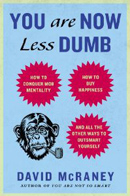 I wrote a whole book full of articles like this one: You Are Now Less Dumb
I wrote a whole book full of articles like this one: You Are Now Less Dumb
Watch the beautiful new trailer here.
Go deeper into understanding just how deluded you really are and learn how you can use that knowledge to be more humble, better connected, and less dumb in the sequel to the internationally bestselling You Are Not So Smart. Preorder now at: Amazon | B&N | BAM | Indiebound | iTunes
Sources:
- Banja, John D. Medical Errors and Medical Narcissism. Sudbury, MA: Jones and Bartlett, 2004.
- ———. Willpower: Rediscovering the Greatest Human Strength. New York: Penguin, 2011.
- Baumeister, Roy F., C. Nathan DeWall, Natalie J. Ciarocco, and Jean M. Twenge. “Social Exclusion Impairs Self-regulation.” Journal of Personality and Social Psychology 88, no. 4 (2005): 589–604.
- Baumeister, Roy F., Ellen Bratslavsky, Mark Muraven, and Dianne M. Tice. “Ego Depletion: Is the Active Self a Limited Resource?” Journal of Personality and Social Psychology 74, no. 5 (1998): 1252–265.
- Beedie, C. J., and A. M. Lane. “The Role of Glucose in Self-control: Another Look at the Evidence and an Alternative Conceptualization.” Personality and Social Psychology Review 16, no. 2 (2012): 143–53.
- Danziger, Shai, Jonathan Levav, and Liora Avnaim-Pesso. “Extraneous Factors in Judicial Decisions.” Ed. Daniel Kahneman. Proceedings of the National Academy of Sciences of the United States of America 108, no. 17 (2011): 6889–892.
- Gailliot, Matthew T., Roy F. Baumeister, C. Nathan DeWall, Jon K. Maner, E. Ashby Plant, Dianne M. Tice, Lauren E. Brewer, and Brandon J. Schmeichel. “Self-control Relies on Glucose as a Limited Energy Source: Willpower Is More Than a Metaphor.” Journal of Personality and Social Psychology 92, no. 2 (2007): 325–36.
- Goodall, J. “Social Rejection, Exclusion, and Shunning Among the Gomb Chimpanzees.” Ethology and Sociobiology 7, nos. 3–4 (1986): 227–36.
- Gorlick, Adam. “Need a Study Break to Refresh? Maybe Not, Say Stanford Researchers.” Stanford News, Stanford University, Oct. 14, 2010. Web: Apr. 2012, news.stanford.edu/news/2010/october/willpower-resource-study-101410.html
- Hagger, Martin S., Chantelle Wood, Chris Stiff, and Nikos L. D. Chatzisarantis. “Ego Depletion and the Strength Model of Self-control: A Meta-analysis.” Psychological Bulletin 136, no. 4 (2010): 495–525.
- Holmes, Oliver Wendell. Medical Essays, 1842–1882. Boston: Houghton Mifflin, 1891.
- Inzlicht, Michael, and Brandon J. Schmeichel. “What Is Ego Depletion? Toward a Mechanistic Revision of the Resource Model of Self-control.” Perspectives on Psychological Science 7, no. 5 (2012): 450–63.
- Job, V., C. S. Dweck, and G. M. Walton. “Ego Depletion—Is It All in Your Head?: Implicit Theories About Willpower Affect Self-Regulation.” Psychological Science 21, no. 11 (2010): 1686–693.
- “Medical Class of 1889.” University of Pennsylvania University Archives and Records Center. Web: Apr. 2012, www.archives.upenn.edu/histy/features/1800s/1889med/med1889entry.html
- Muraven, Mark, and Owen Flanagan. “The Mechanisms of Self-control: Lessons from Addiction.” Lecture. The Oxford Centre for Neuroethics, University of Oxford. May 13, 2010.
- Muraven, Mark, and Roy F. Baumeister. “Self-regulation and Depletion of Limited Resources: Does Self-control Resemble a Muscle?” Psychological Bulletin 126, no. 2 (2000): 247–59.
- Muraven, Mark, Dianne M. Tice, and Roy F. Baumeister. “Self-control as a Limited Resource: Regulatory Depletion Patterns.” Journal of Personality and Social Psychology 74, no. 3 (1998): 774–89.
- “Overview: Medicine 1800–1899.” BookRags. Web: Apr. 2012, www.bookrags.com/research/overview-medicine-1800-1899-scit-051234/
- Tice, Dianne M., Roy F. Baumeister, Dikla Shmueli, and Mark Muraven. “Restoring the Self: Positive Affect Helps Improve Self-regulation Following Ego Depletion.” Journal of Experimental Social Psychology 43, no. 3 (2007): 379–84.
- Tierney, John. “Do You Suffer From Decision Fatigue?” The New York Times, Aug. 21, 2011. Web: Apr. 2012, www.nytimes.com/2011/08/21/magazine/do-you-suffer-fromdecision-fatigue.html?pagewanted=all. A version of this article appeared in print on August 21, 2011, on page MM33 of The New York Times Magazine with the headline “To Choose Is to Lose.”
- Vohs, Kathleen D., Brian D. Glass, W. Todd Maddox, and Arthur B. Markman. “Ego Depletion Is Not Just Fatigue: Evidence from a Total Sleep Deprivation Experiment.” Social Psychological and Personality Science 2, no. 2 (2011): 166–73.
- Wegner, Daniel M., David J. Schneider, Samuel R. Carter, and Teri L. White. “Paradoxical Effects of Thought Suppression.” Journal of Personality and Social Psychology 53, no. 1 (1987): 5–13.
- Wootton, David. Bad Medicine: Doctors Doing Harm Since Hippocrates. Oxford: Oxford University Press, 2006.
- Wrangham, Richard W. Chimpanzee Cultures. Cambridge, MA: Harvard University Press in cooperation with the Chicago Academy of Sciences, 1996.

 Last week, we saw Luke Skywalker
Last week, we saw Luke Skywalker 



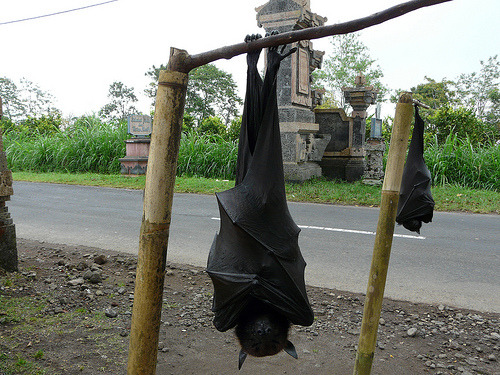

 We know there's water frozen on the Moon — and we now know there's plenty more water
We know there's water frozen on the Moon — and we now know there's plenty more water  Livros cuidadosamente desenhados e decorados e cadernos preenchidos de textos escritos com letras caprichadas restavam destruídos em meio aos escombros das casas demolidas. Esse cenário é o que restou depois da remoção de famílias ciganas de suas casas, sem aviso prévio. Móveis, roupas, utensílios de cozinha, tudo se perde quando os tratores avançam sobre as casas. As crianças não puderam nem salvar seu material escolar. No fim, ficaram apenas os escombros, e nenhum lugar onde morar.
Livros cuidadosamente desenhados e decorados e cadernos preenchidos de textos escritos com letras caprichadas restavam destruídos em meio aos escombros das casas demolidas. Esse cenário é o que restou depois da remoção de famílias ciganas de suas casas, sem aviso prévio. Móveis, roupas, utensílios de cozinha, tudo se perde quando os tratores avançam sobre as casas. As crianças não puderam nem salvar seu material escolar. No fim, ficaram apenas os escombros, e nenhum lugar onde morar. 























 here at The Wilson Quarterly is having access to our
here at The Wilson Quarterly is having access to our 




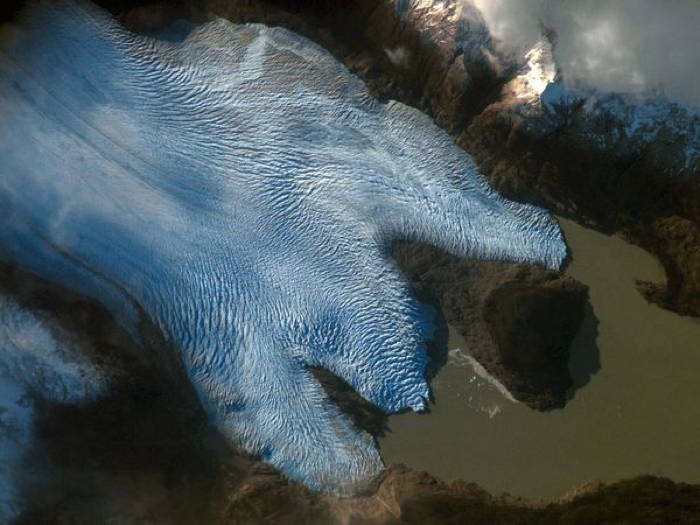







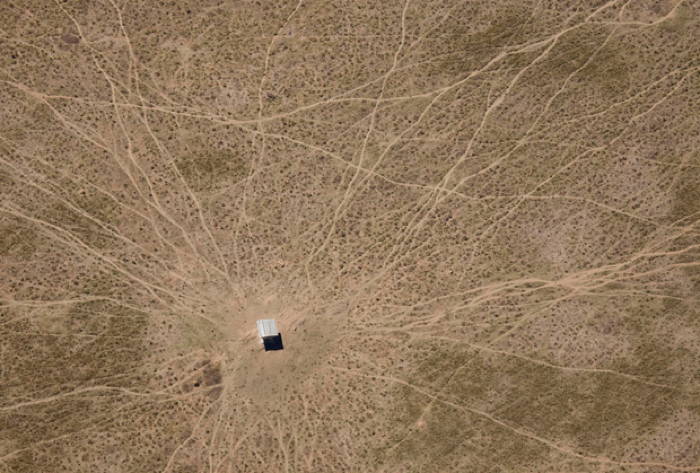

















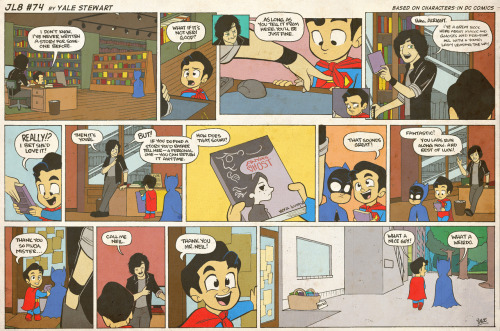










 In recent months the number of DMCA takedown requests sent out by copyright holders has increased dramatically, and it’s starting to turn the Internet into a big mess.
In recent months the number of DMCA takedown requests sent out by copyright holders has increased dramatically, and it’s starting to turn the Internet into a big mess.
 Since the copyright monopoly is primarily an economic construction, there is a
Since the copyright monopoly is primarily an economic construction, there is a 


